A Short Story of a Helpful Tip
He described how the transmission was rebuilt but soon came back with a noise complaint. When he inspected it he noticed that upon initial startup he could hear no noise, but after 20 seconds or so the noise occurred while the vehicle was idling in either Park or Neutral. When he placed it into gear the noise went away, but as soon as the vehicle began to move the noise returned. As the transmission shifted the noise lessened, and by the time he reached third or fourth gear the noise was no longer present. He also noticed that every once in a while the vehicle would try to stall when coming to a stop.
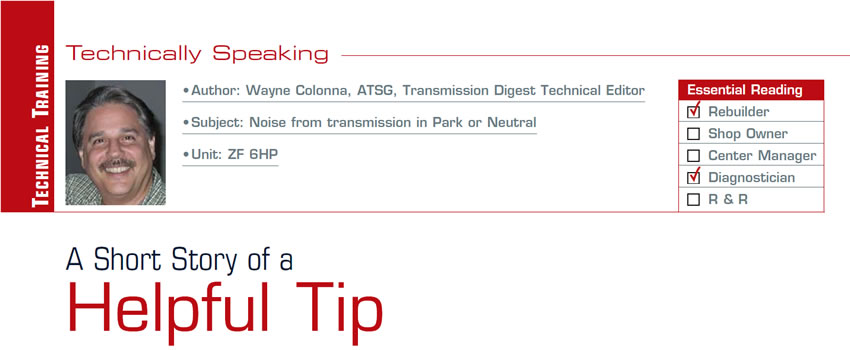
Attitudes and Altitudes
Have you ever considered that maybe your attitude as the shop owner is the root cause of the bad attitude your customers have when they come in, like this customer? Let me explain what I am talking about. After the customer calmed down and left, the manager showed me a folder with restraining orders the owner had filed against previous unruly customers. I had never seen that before. That was a new one on me. I went to the owner and asked the owner what he was going to do about this customer and he said did not know. He just knew he was not going to give him his money back.
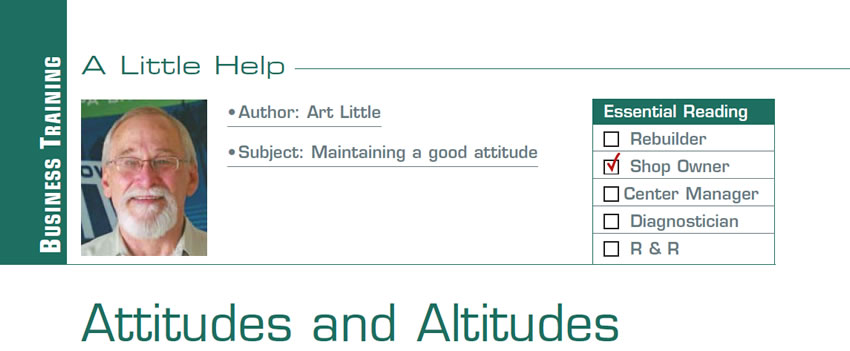
Trusty Accord Gets Better with Time
Honda revamps 2012 model; it’s better than ever
This time, let’s focus on the Honda Accord and compare the current 2012 LX with the 1997 model.
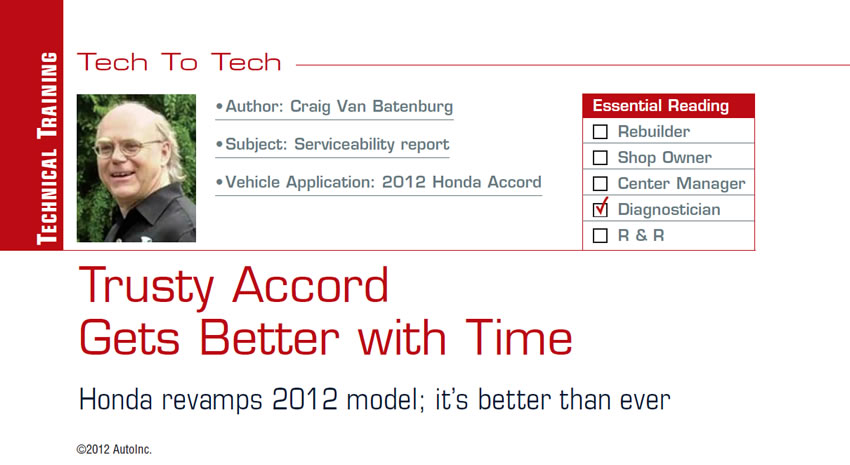
Talkin’ ’Bout My Gen-eration
A perfect example of rapid transmission evolution is the ZF six-speeds. In these units, modifications to the mechatronic (Figure 1) were made in 2006 to increase oil flow, which reduced the duration of the shifts. So ZF6 “Generation 1” ranges from 2000 to 2005 and encompasses the ZF 6HP19/26/32 versions; ZF6 “Generation 2” ranges from 2006 through current production and refers to ZF 6HP21/28/34 units. These 19, 26, 32 and 21, 28 and 34 numbers designate sequentially larger amounts of torque capacity of the transmission.
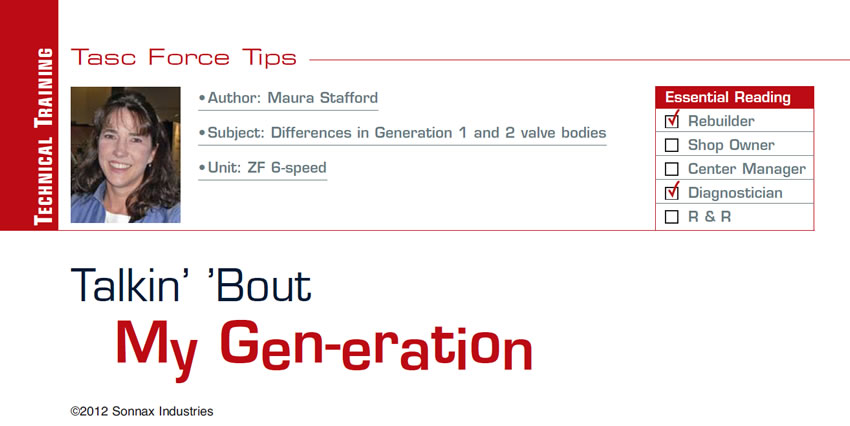
Less Time Spent Diagnosing
We sold a 4L60-E to a neighboring shop, which installed it and then brought it back to us because of a P0753 shift solenoid A code. The code would recur consistently and almost immediately when the vehicle was driven. However, the transmission would NOT go to failsafe; it would continue working fine (this is a key point).
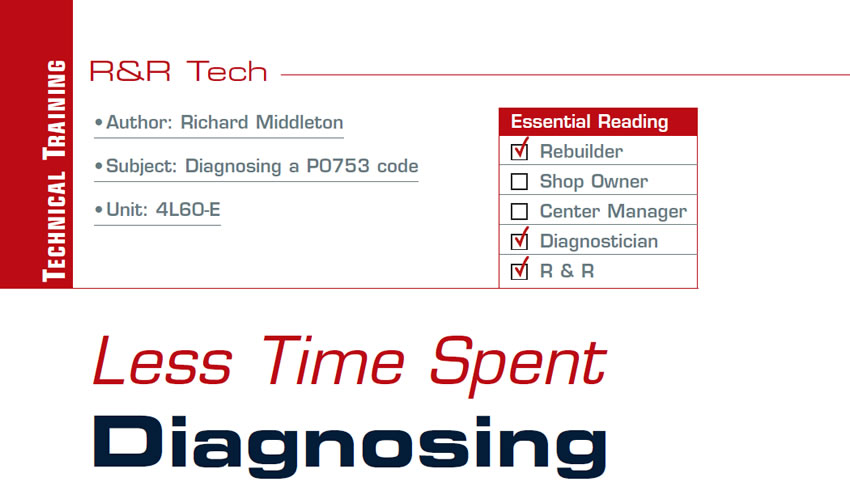
Trial & Error
Although the list is exponentially larger than what we have room for here, we’ll explore three very common equipment and piston-assembly issues, methodologies of resolution and whether there are any tools that can help your shop return to production speed sooner:
1. Confirming contact pressure
2. Temperature correlations
3. Root-causing the impact of machining-related issues on bond strength
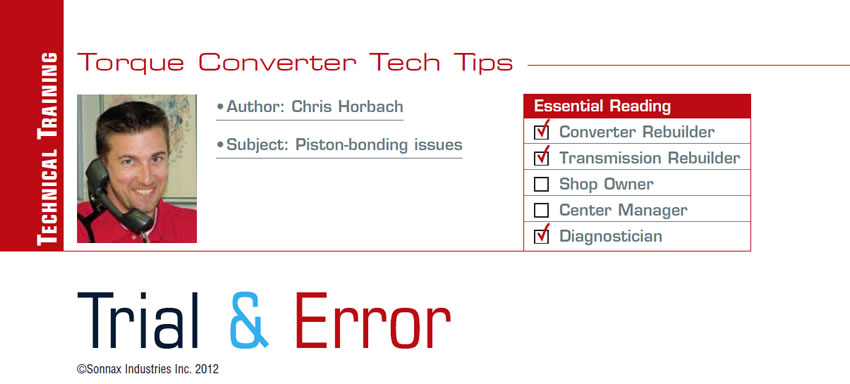
Dealing with Shift Adaptations
Shift adaptations are something we have to deal with in the transmission industry. More and more car manufacturers are making use of this function to keep their transmissions shifting like new as they wear. Part of the function of adaptation is to allow the transmission control module (TCM) to compensate for the gradual wear of clutches and bands and for internal hydraulic leaks resulting from use.
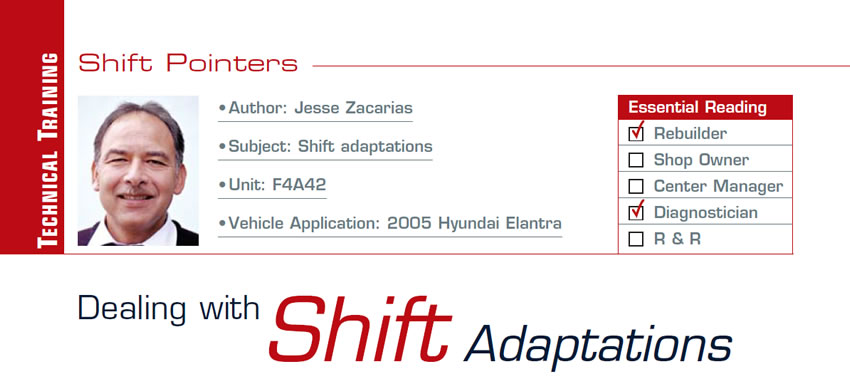
The NVG 120 Transfer Case: Simple Complexity
Such is the New Venture Gear 120 transfer case (Figure 1). This one-speed all-wheel-drive unit has no electronics to operate, and no internal clutch pack or viscous coupling. It was used in Chevy Trailblazers and GMC Envoys from 2006 to 2009. Requiring no driver input, the unit uses an internal planetary-type differential (Figure 2) to bias torque between the rear and front axles.
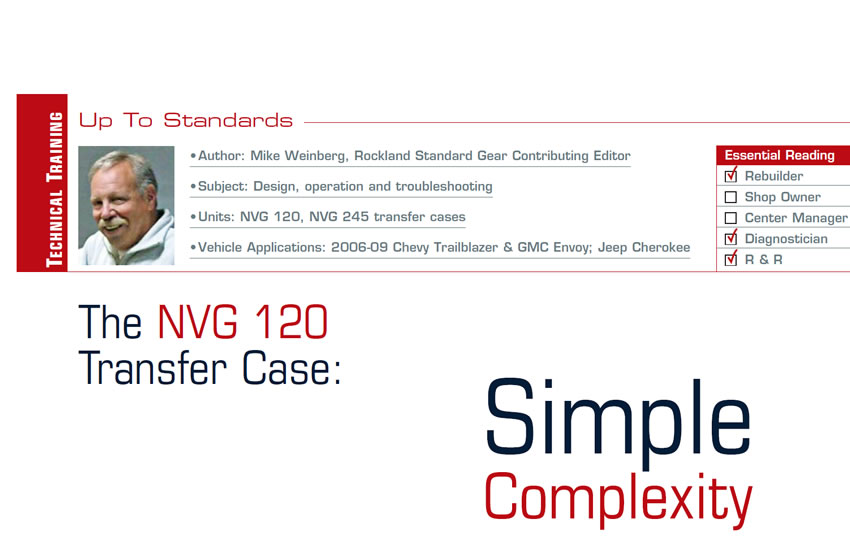
A New DIY Era Is Upon Us
The face of our industry has changed so dramatically over the past several years, owing to the technology and the economy, that it’s hardly recognizable. Electrical and hydraulic systems continue to become more complex but customers can’t see it, nor do they care. All they want is what they’ve always wanted: someone to fix the problem. It doesn’t matter to them where the car was made or whether it’s an electrical or an internal transmission problem; they just want it fixed as inexpensively and as quickly as possible. Trying to explain in detail what it is and how you will fix it leaves them with that “deer in the headlights” look. You have to always be aware that this is your line of work, not theirs. They hopefully know theirs; they expect you to know yours so they don’t have to concern themselves with it.
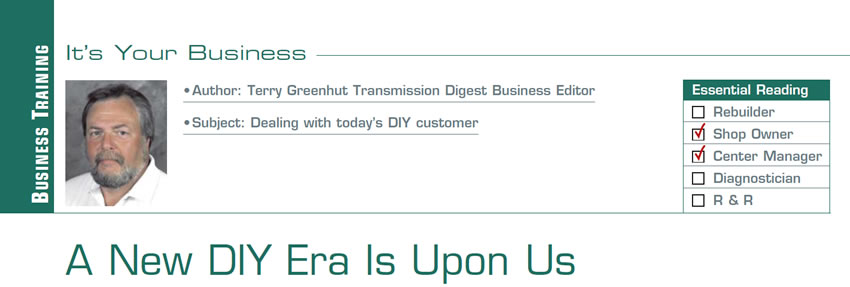
Building a Positive Attitude, Building Your Bank Account
Attitude is NOT everything. It is your ability to stay committed to a positive attitude through everything that makes the difference between winning and losing.

December 2012 Issue
In This Issue
722.6/NAG1: TCC judder
Chrysler 62TE: 1-2 or 2-3 neutral
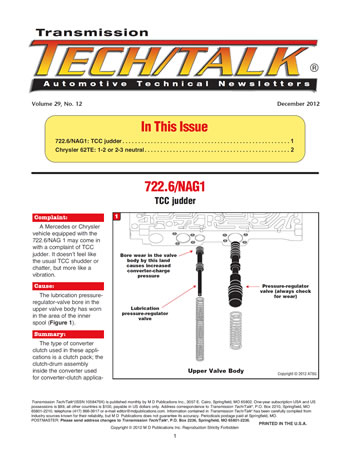
Back to Basics
I know this much: Managers who sell on the phone make less money than managers who contact-sell. I have tried it both ways. When I call on the phone, the customer is sitting in his environment and all he has to do is hang up and I am finished. He may be distracted and not able to focus on my service recommendation. He may not be able to take personal calls at work. Bottom line, the customer has control of me and can easily postpone his decision. I don’t know about you, but when it is my money on the line, I like to be in control of the transaction. If you can do it over the phone, my hat is off to you. I just don’t get that warm and fuzzy feeling over the phone.

